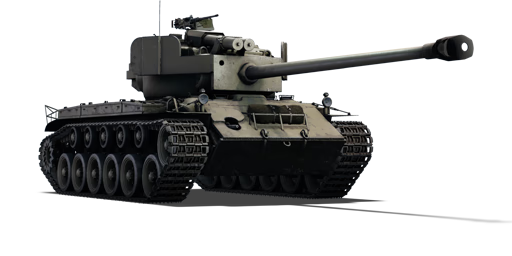With the development of the T26E3 Pershing tank, the US Army found themselves with an adequate heavy tank for the European theater, but it was still not on par with the latest German heavy tank, the Tiger II. The long 88 mm KwK43 cannon proved superior to the 90 mm M3 cannon on the Pershing, and so the US Army Ordnance Department developed a new gun to improve the 90 mm cannon's penetration capability, the 90 mm T15. This was successfully installed into a T26E1 prototype, informally designated T26E1-1. The vehicle found itself sent to Europe for combat trials in March 1945. The soldiers of the 3rd Armored Division received the tank and provided additional protection with add-on armour plates on the turret and hull. Seeing some combat service against the Germans, the tank would serve until the end of the war, when it was scrapped sometime in the post-war period.
The T26E1-1 was introduced in Update 1.57 "Battle March" and while it takes the basis of a normal M26 Pershing, it is presented with an increase in armour and firepower. While the T26E1-1 is weighed down by the additional armour, the 90 mm T15E1 gun can allow the vehicle to knock out even the heaviest tanks it faces at its battle rating. However, the long reload means that one cannot be too careless with how they use the cannon, so take care not to take the vehicle into close quarters brawling situations.















